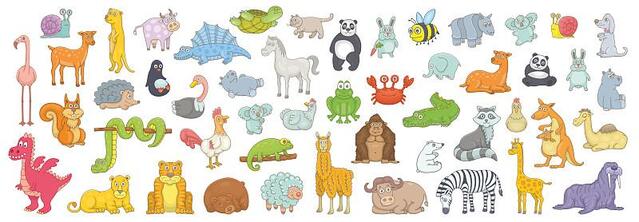In nature, many animals have evolved amazing adaptations, one of which is the phenomenon of "dislocating the jaw". Some animals temporarily dislocate their jaws to expand their mouths in order to swallow larger prey or adapt to specific environments. This phenomenon is particularly common among carnivores, especially snakes. This article will explore which animals have this ability to dislocate their jaws, how they use this technique to survive, and the biological principles behind the behavior of dislocating the jaws.
The phenomenon of "dislocating the jaw" refers to the ability of some animals to temporarily dislocate or expand their jaws, thereby expanding the opening of their mouths and helping them swallow food that is much larger than their own mouths. This phenomenon usually occurs in animals without teeth or with loose teeth, and they use this technique to adapt to the needs of predation.

Snakes are the most famous animals to dislocate their jaws. They separate their upper and lower jaws to expand their mouths so they can swallow prey that is larger than their heads. The jaws of snakes are not completely fixed to the bones of the head, but are connected by ligaments and muscles, so they can flexibly expand their jaws.
Python and Boa Constrictor: Pythons are one of the largest snakes, and they can swallow large animals such as deer, wild boars and even crocodiles. The upper and lower jaws of pythons are connected by flexible ligaments, and when they encounter large prey, they can easily "disengage their jaws" to swallow the prey.
Rattlesnake: Rattlesnakes are venomous snakes, and their "disengagement" behavior is not only used for hunting, but also for releasing venom. Their jaw structure allows them to open their mouths wide, release their fangs and bite their prey.
Although their jaws are much stronger than those of snakes, crocodiles are also flexible. Crocodiles can extend their jaws to a great extent, helping them to take down large prey in the water, such as fish, turtles, or other small mammals. This allows them to quickly lock onto their prey and swallow it whole.
Catfish, which are common in both freshwater and marine environments, have similar jaw-disengaging abilities. These fish extend their jaws to help them swallow larger prey, such as small fish, crustaceans, and even smaller mammals.
As a large water bird, pelicans use their flexible beaks to hunt fish. Their lower beaks can expand greatly to form a net bag to catch fish in the water. Although not strictly "jaw-dropping", this jaw extension ability is similar to the jaw-dropping mechanism of snakes, which helps swallow prey larger than the beak.
Chameleons are unique reptiles that are not only known for their flexible tongues, but also have a certain degree of jaw flexibility. When they hunt insects, they can open their mouths wide and extend their long tongues to quickly catch prey. This ability to extend the jaw allows chameleons to hunt without moving their bodies, reducing the risk of exposure.
In the deep sea environment, many fish have evolved the unique ability to dislocate their jaws to adapt to the harsh living environment. For example, gulper eels and black swallowers can swallow prey much larger than their bodies by extending their jaws to the limit. The unique structure of these fish helps them capture a large number of prey in the deep sea environment where food is scarce.
The ability of animals to dislocate their jaws depends on the structure of their bones, ligaments and muscles. For snakes, their upper and lower jaws are not tightly connected like mammals, but are connected by strong ligaments and muscles. This allows snakes to freely expand their jaws according to the size of the prey.
In addition, during the process of dislocation, the jaw muscles of the animal will be extremely stretched, allowing the angle of the jaw to increase. For some animals, their jaws can reposition themselves after food is ingested, restoring a normal bite.
Jaw dislocation provides these animals with a variety of survival advantages:
Capturing large prey: Jaw dislocation allows animals to swallow prey that is much larger than their mouths, thus expanding their food options.
Reduce chewing time: Many animals with jaw dislocation swallow their prey without much chewing, swallowing it directly into the stomach. This saves energy and time, which is especially important in a competitive environment.
Defense and attack: In some cases, jaw dislocation is not only for hunting, but also for defense or attack. For example, venomous snakes use jaw extension to display threats or attack.
Although jaw dislocation provides many survival advantages to these animals, this behavior also has some limitations:
Energy consumption: jaw dislocation requires animals to expend a lot of energy, especially when catching and swallowing large prey. This means that the animal needs some time to recover.
Physical damage potential: Over-extending the jaw can cause ligament damage, especially when catching prey that is too large.
Jaw dislocation is an amazing survival technique in nature, and many animals have evolved to be able to extend their jaws to swallow large prey. Snakes, crocodiles, catfish and some deep-sea fish survive in complex environments in this unique way. This biological phenomenon demonstrates the infinite possibilities of nature and reflects the wisdom and strength of animals in adapting to different environments.
animal tags: Snakes Crocodiles Catfish Pelicans Chameleons Deep-sea-Fish
We created this article in conjunction with AI technology, then made sure it was fact-checked and edited by a Animals Top editor.